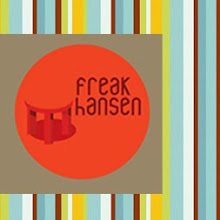
Hans Wegner, whose Danish Modern furniture — most famously his chairs — helped change the course of design history in the 1950s and ’60s by sanding modernism’s sharp edges and giving aesthetes a comfortable seat, died on Jan. 26 in Copenhagen. He was 92.
Hans Wegner at his home in 1997.
Readers’ Opinions
His death was confirmed by his daughter Marianne Wegner, who worked alongside her father for more than 20 years.
Mr. Wegner (pronounced VEG-ner in English and VAY-ner in Danish) was one of a small group of Danish furniture designers whose elegant but comfortable creations made Danish Modern all the rage among cosmopolitan Americans of the ’50s and ’60s.
He also earned a footnote in political history, when, in 1960, Vice President Richard M. Nixon and Senator John F. Kennedy were seated on Wegner chairs during the first nationally televised presidential debate.
“He was one of what I think of as the humble giants of 20th-century design, those men who would probably shun the term designer and prefer to call themselves cabinetmakers,” said Paola Antonelli, the curator of architecture and design at the Museum of Modern Art in New York, where many of Mr. Wegner’s chairs are not only on display but in use, in the museum’s several restaurants.
Describing the appeal of his furniture, she said, “First and foremost, it’s comfortable, and saying that it’s comfortable before saying it’s beautiful is really high praise, because the truth is that it’s incredibly elegant.”
Mr. Wegner rose to international prominence as one of a handful of Danes who seized the design world’s attention with a fresh aesthetic of sculptural and organic modern furniture. Others were Arne Jacobsen, Finn Juhl, Borge Mogensen and Poul Kjaerholm.
Their works, often made in warm blond wood, domesticated the cold chrome shine of the Bauhaus-influenced International style. In the process, they found a way to dovetail the words “Danish” and “modern” for the first time, joining cabinetmaker-guild traditions of high craftsmanship, quality and comfort with modernist principles of simplicity and graphic beauty.
This unity was epitomized by Mr. Wegner’s two best-known chair designs, both introduced in late 1949. One was the Wishbone chair, with a Y-shaped back split and a curved back and armrest suggested by a child’s Chinese chair he saw. Sometimes called the Y-back, it is an understated work of simplicity and comfort, its graceful shape hinting at both East Asian design and modernist ideals. It is still made today by the Danish firm Carl Hansen & Son.
His other 1949 success became known simply as the Chair, or the Round Chair. (Mr. Wegner did not name his chairs, letting manufacturers or customers name them as they liked, leading to some confusion over the years.) The Chair is a strikingly modern design, with a caned seat and a back and armrests made of one continuous semicircle of wood. This was the chair used in the Kennedy-Nixon debate.
Born in 1914, Hans Jorgen Wegner learned woodworking as a boy, the son of a cobbler, in Tondern, in southern Denmark. He was studying design in Copenhagen in 1938 when he was hired by Mr. Jacobsen and Erik Moller to design furniture for the town hall they were creating in Aarhus, Denmark. Before the project was over, he met Inga Helbo, a secretary in Mr. Jacobsen’s office. They later married.
Once the Aarhus project was completed, Mr. Wegner started his own design business, and by the mid-1940s he had created chair designs for the Fritz Hansen and Johannes Hansen furniture companies, including the Peacock chair, a smart update of the Windsor chair.
Working out of a studio at his house, Mr. Wegner produced hundreds of prototypes and had to be pressed to leave work for family vacations. Asked what his other interests were, his daughter Marianne, said with a laugh: “Apart from furniture? None.” Mr. Wegner’s wife and another daughter, Eva Wegner, also survive him.
By the late 1960s, the rage for Danish Modern had cooled in the United States. But Mr. Wegner kept working, creating new designs for another Danish company, P P Mobler. He retired in the early 1990s, when Marianne, an architect, took over his studio.
Over the last decade he was able to witness a surge of renewed interest in his work. Mid-century Modern furniture is again in high demand, according to spokesmen for P P Mobler and Carl Hansen. What was a chic look a half-century ago has today joined the pantheon of mainstream style, perhaps a fitting tribute to a man who believed that a chair should be made well enough to last at least 50 years.
TEXT BY THE NEW YORK TIMES.

